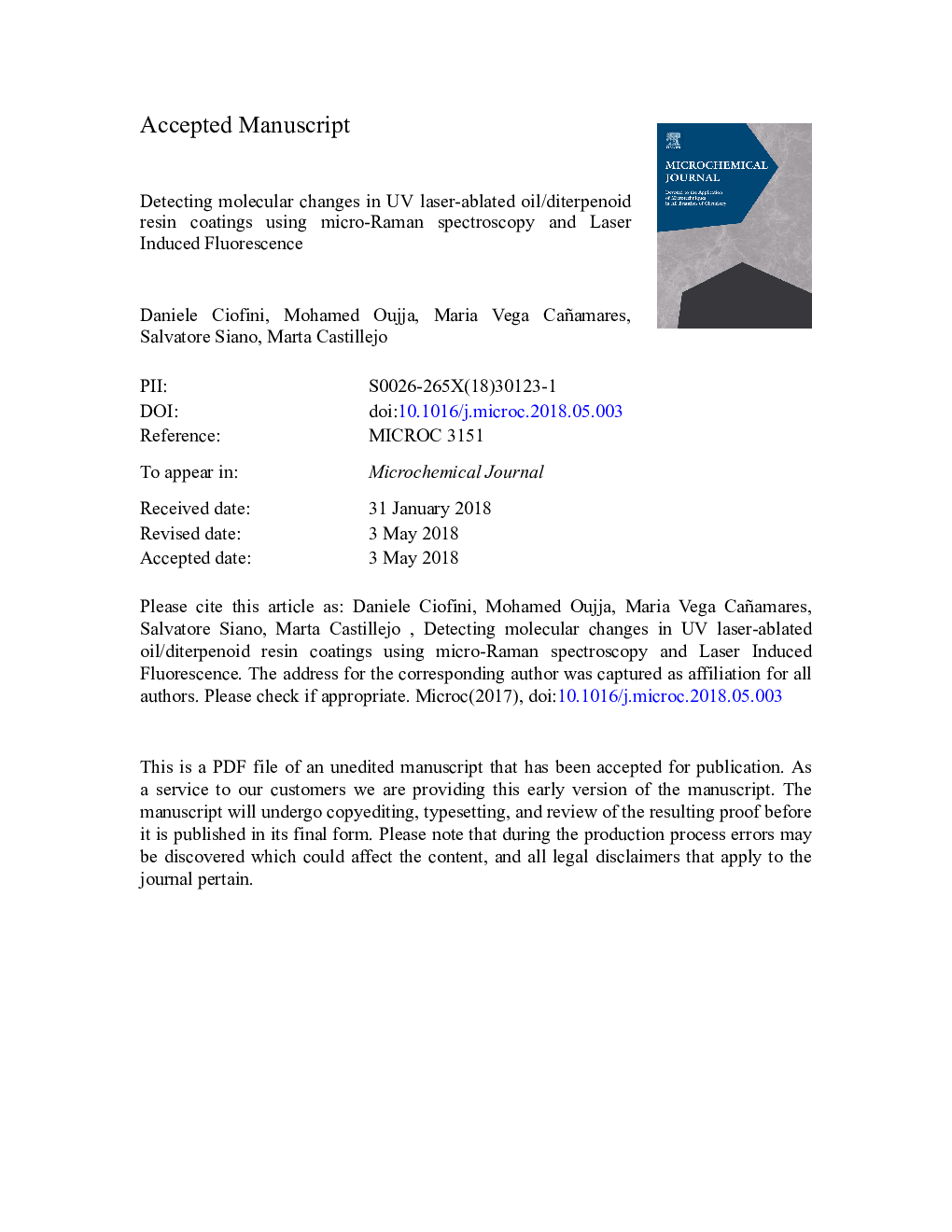| Article ID | Journal | Published Year | Pages | File Type |
|---|---|---|---|---|
| 7640042 | Microchemical Journal | 2018 | 38 Pages |
Abstract
The results underlined that, due to the presence of a polymer network, sandarac and copal resin coatings showed higher Fth than those composed of colophony. Morphologically, all the coatings were subject to bubbling upon 266â¯nm irradiation, while damage-free at 213â¯nm. At molecular level, irradiation at 266â¯nm produced minor changes to ν(CH3)/ν(CH2), ν(CO) and ν(CC) modes, thus confirming an ablation mechanism mainly driven by photo-thermal bond-breaking through the ejection of gaseous by-products. Raman background fluctuations along with shifting and broadening of LIF maxima were supportive in the assessment of laser-induced surface modifications. Finally, the work performed indicates that the 213â¯nm wavelength is the most indicated for the treatment of aged solvent and oil diterpenoid-based coatings, as no side effects occurred. This outcome, corroborated by the previous results obtained in triterpenoid resin films, may have important implications in the field of cultural heritage conservation, as it extends the application range of solid-state Nd:YAG lasers to all types of protective and decorative terpenoid coatings.
Related Topics
Physical Sciences and Engineering
Chemistry
Analytical Chemistry
Authors
Daniele Ciofini, Mohamed Oujja, Maria Vega Cañamares, Salvatore Siano, Marta Castillejo,
